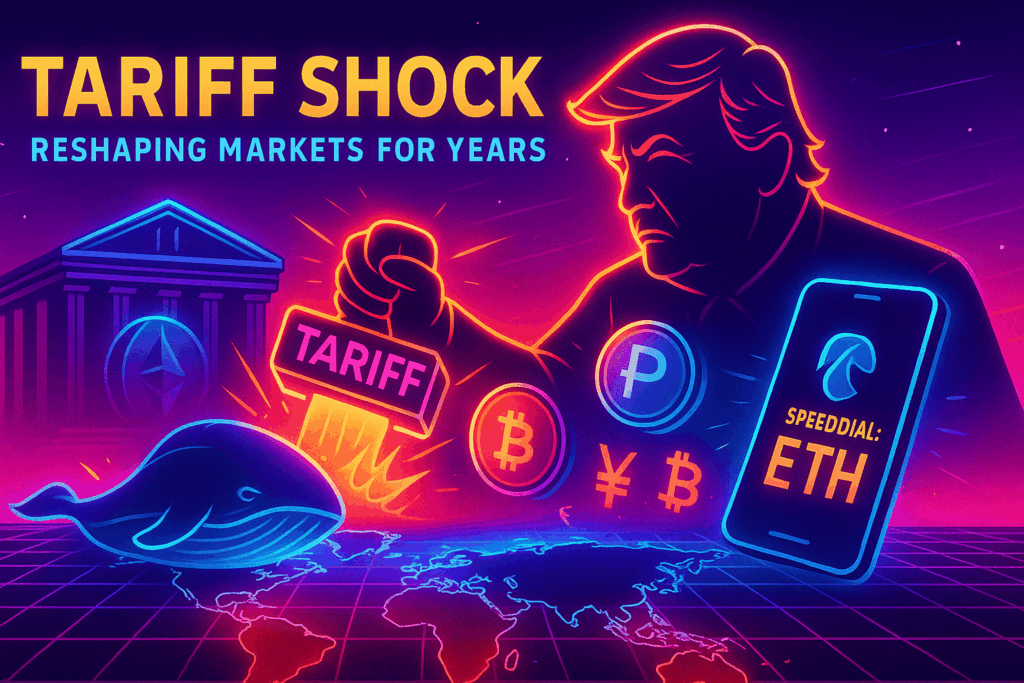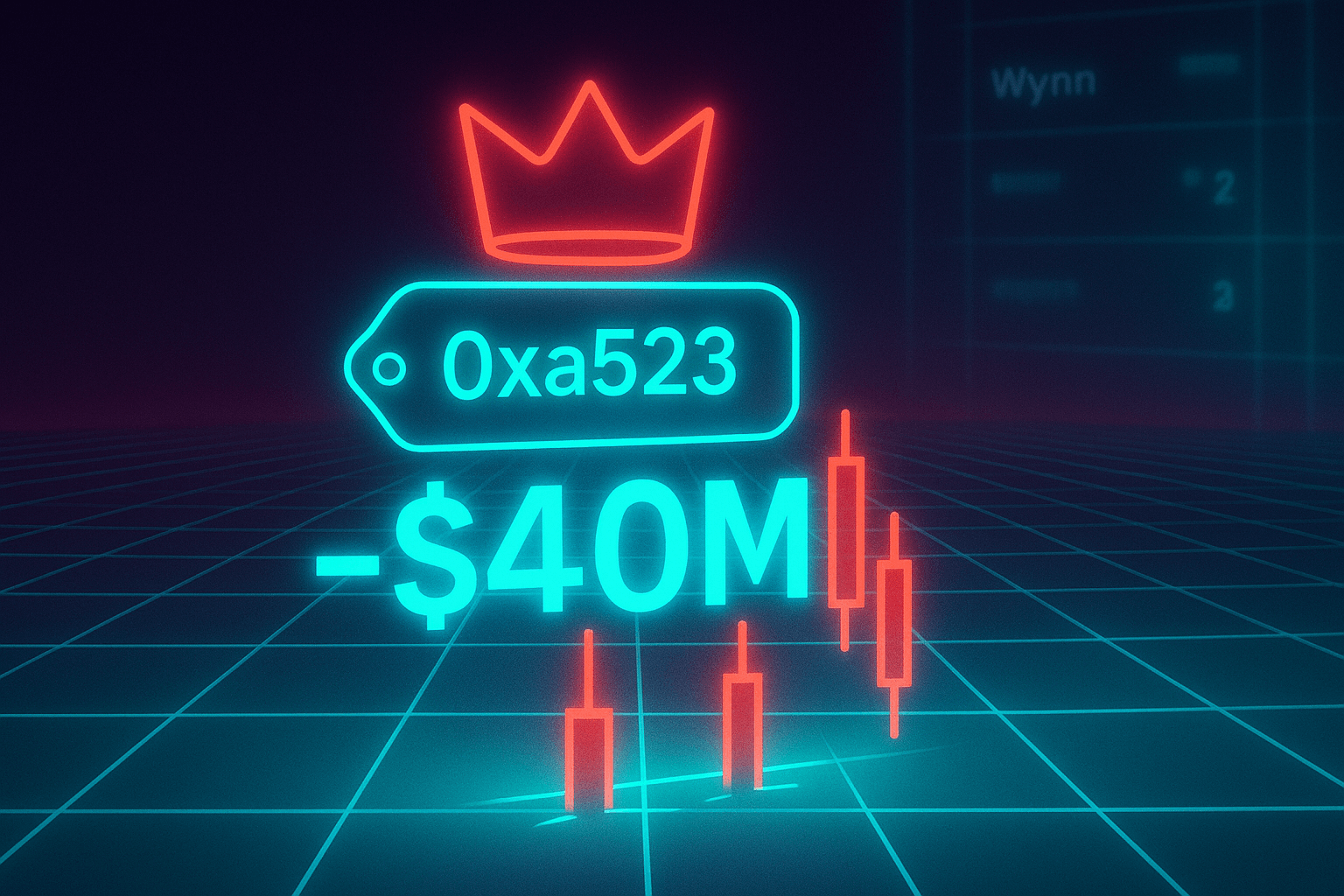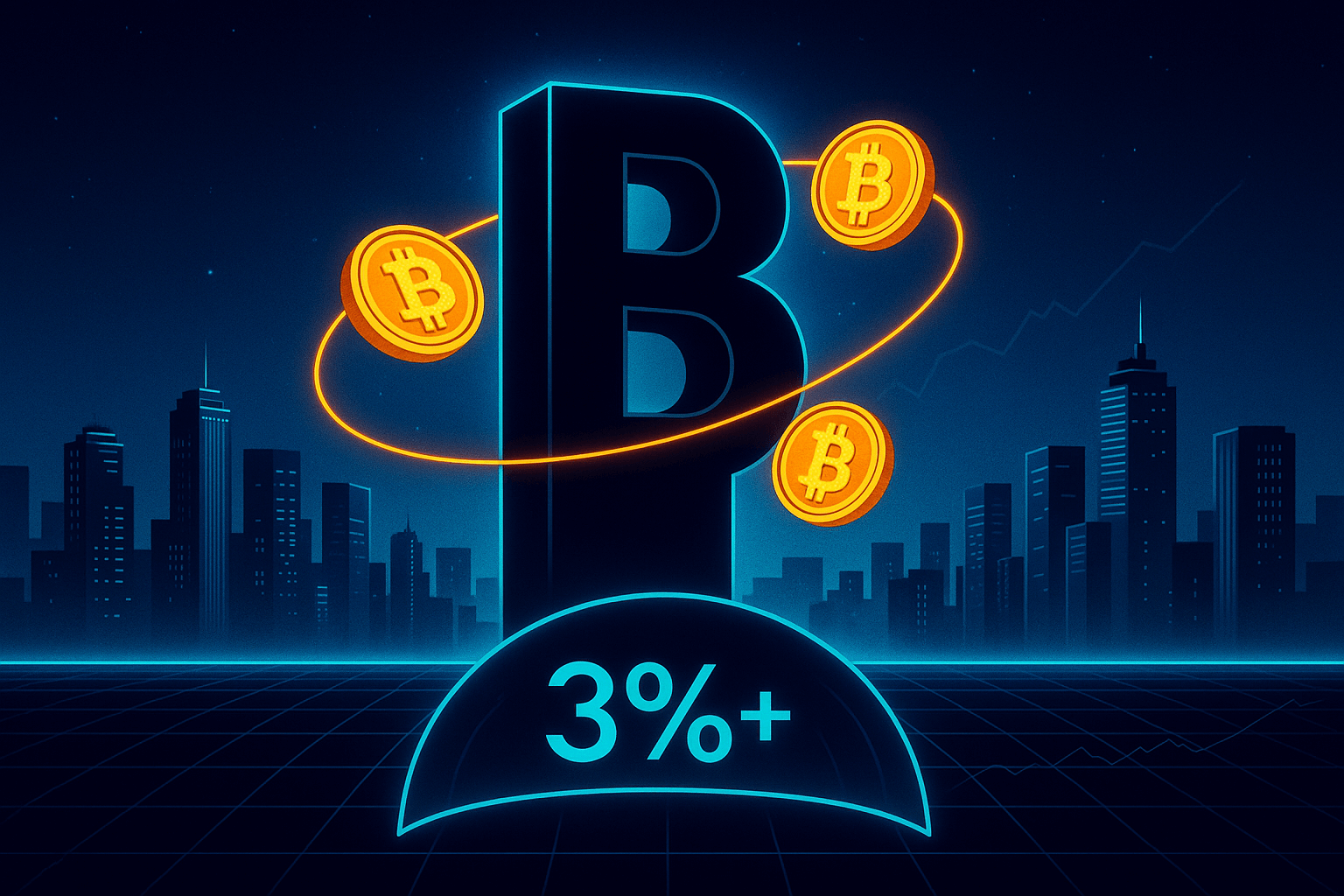
Trump’s Tariff Shock Could Reshape Markets for Years
April 4, 2025
The Policy Pivot That Started the Storm
President Trump has re-imposed a blanket 10 % tariff on all U.S. imports, layered with country-specific duties reaching as high as 145 % on China and 25 % on autos.
These measures catapult the average U.S. tariff rate to roughly 18.8 %, the highest since the Second World War, reversing decades of liberalization.
Why Equities Face Structural Headwinds
Tariffs operate like a tax on corporate margins: Penn Wharton estimates a 6 % hit to long-run U.S. GDP and a 5 % drag on real wages if the duties persist.
Lower growth and stickier inflation raise discount rates, pressuring valuations in the S&P 500 and Nasdaq—indices already down double-digits since the April rollout.
Historically tariff-induced recessions lag policy by 12–18 months, suggesting the deeper effects may only emerge in late 2026 earnings.
Sectors Most at Risk
- Consumer Discretionary: import-heavy supply chains face direct cost inflation.
- Semiconductors & EVs: targeted 25 %–50 % levies raise BOM costs, complicating reshoring narratives.
- Manufacturing Exporters: retaliatory duties from China and the EU threaten revenue pools abroad.
Crypto: Risk Asset or Inflation Hedge?
Digital assets reacted like high-beta equities at the announcement, shedding ~26 % in aggregate market cap as investors rushed to cash and gold.
Correlation between Bitcoin and the S&P 500 jumped from –0.32 to 0.47 by mid-March, underscoring a risk-off contagion.
Yet the same protectionist shock also fuels the narrative for non-sovereign stores of value: Google searches for “Bitcoin inflation hedge” surged 40 % week-on-week after the tariff decree.
Long-Term Crypto Scenarios
Stagflation Hedge: If tariffs entrench higher consumer prices and force the Fed into rate-cut-while-inflation-rising territory, Bitcoin could reprise its 2020-style outperformance as fiat skepticism mounts.
Liquidity Crunch: Conversely, should growth crater faster than policy can ease, crypto may struggle alongside equities until macro visibility returns.
Macro Crosscurrents to Watch
- Inflation Pulse: One-year inflation swaps now price 3 %–5 % CPI versus the Fed’s 2 % goal.
- Rate-Cut Expectations: Fed-funds futures imply up to four cuts in 2025, a dovish pivot that historically lifts crypto liquidity.
- Retaliation Map: China’s 125 % counter-tariff and EU’s 25 % duties broaden the trade shock, adding downside risk to multinational earnings.
Strategic Playbook for Investors
Equities: Prioritize firms with domestic supply chains, strong pricing power and low debt rollover needs. Consider defensive sectors—utilities, healthcare—as relative shelters.
Crypto: Use market stress to build core Bitcoin positions via our OTC crypto exchange for block execution, while parking stablecoins in the high-yield Paypilot crypto wallet to earn passive USDC rewards.
Hedging: Pair long-crypto exposure with protective puts on trade-sensitive equity indices to manage left-tail risk.
Paypilot Edge Amid Protectionism
Our unified dashboard lets you track portfolio P&L across wallet, exchange and crypto card spending in real time—even as tariffs distort markets. Instant settlement through our crypto processing rail means you can convert gains to EUR at checkout with zero FX spread, a handy arbitrage if the dollar staggers under rising import costs.
Need to rebalance above fifty BTC? Tap the OTC crypto exchange desk for deep-liquidity trades that sidestep slippage entirely. In a world of weaponized tariffs, frictionless capital mobility is a superpower.
Final Word
Protectionism seldom stops at the border—it bleeds into earnings, sentiment and liquidity. The new tariff era is likely to mean lower multiples for globalized equities and choppier waters for crypto in the near term, yet it may ultimately strengthen the investment case for decentralized, non-sovereign assets.
Stay nimble, keep dry powder, and leverage Paypilot’s toolset to turn macro volatility into strategic opportunity.
Disclosure: The author holds BTC and equities in the S&P 500. This material is for informational purposes only and does not constitute financial advice.



